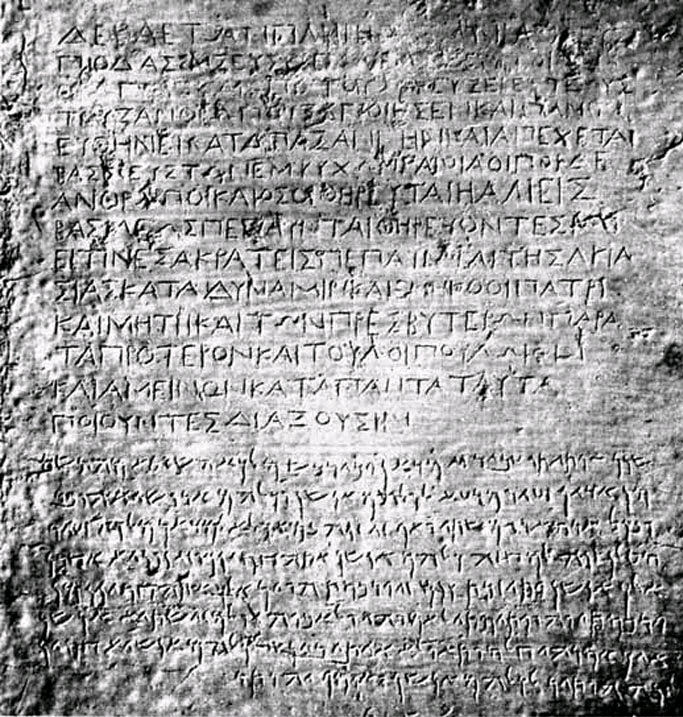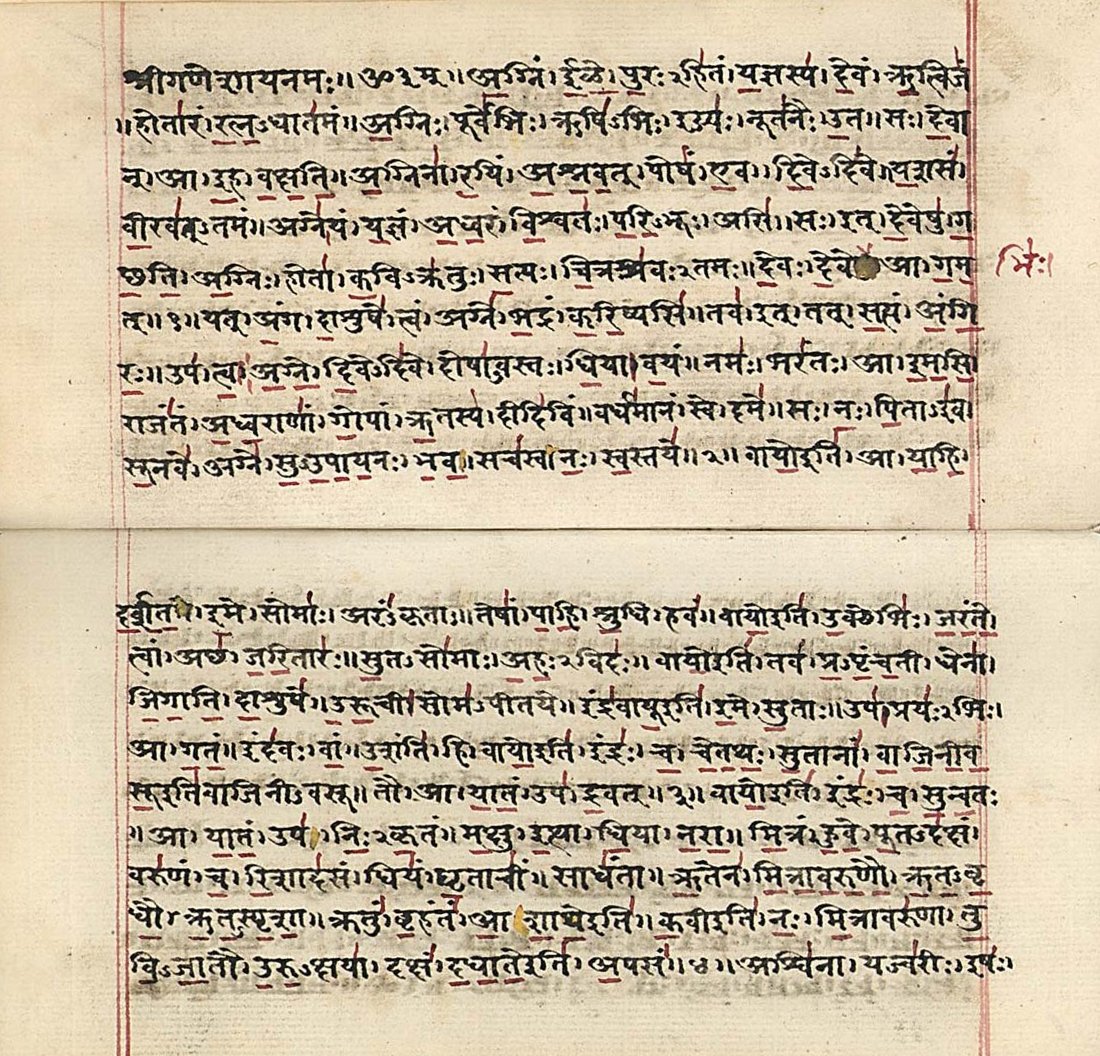|
Kharoṣṭhī
The Kharoṣṭhī script, also spelled Kharoshthi (Kharosthi: ), was an ancient Indo-Iranian script used by various Aryan peoples in north-western regions of the Indian subcontinent, more precisely around present-day northern Pakistan and eastern Afghanistan. It was used in Central Asia as well. An abugida, it was introduced at least by the middle of the 3rd century BCE, possibly during the 4th century BCE, and remained in use until it died out in its homeland around the 3rd century CE. It was also in use in Bactria, the Kushan Empire, Sogdia, and along the Silk Road. There is some evidence it may have survived until the 7th century in Khotan and Niya, both cities in East Turkestan. Form Kharosthi (, from right to left ''Kha-ro-ṣṭhī'') is mostly written right to left (type A). Each syllable includes the short /a/ sound by default, with other vowels being indicated by diacritic marks. Recent epigraphic evidence has shown that the order of letters in the Kharosthi ... [...More Info...] [...Related Items...] OR: [Wikipedia] [Google] [Baidu] |
Brahmi Script
Brahmi (; ; ISO 15919, ISO: ''Brāhmī'') is a writing system of ancient South Asia. "Until the late nineteenth century, the script of the Aśokan (non-Kharosthi) inscriptions and its immediate derivatives was referred to by various names such as 'lath' or 'Lat', 'Southern Aśokan', 'Indian Pali', 'Mauryan', and so on. The application to it of the name Brahmi [''sc. lipi''], which stands at the head of the Buddhist and Jaina script lists, was first suggested by T[errien] de Lacouperie, who noted that in the Chinese Buddhist encyclopedia ''Fa yiian chu lin'' the scripts whose names corresponded to the Brahmi and Kharosthi of the ''Lalitavistara'' are described as written from left to right and from right to left, respectively. He therefore suggested that the name Brahmi should refer to the left-to-right 'Indo-Pali' script of the Aśokan pillar inscriptions, and Kharosthi to the right-to-left 'Bactro-Pali' script of the rock inscriptions from the northwest." that appeared as a full ... [...More Info...] [...Related Items...] OR: [Wikipedia] [Google] [Baidu] |
Gāndhārī Language
Gāndhārī is the modern name, coined by scholar Harold Walter Bailey (in 1946), for a Prakrit language found mainly in texts dated between the 3rd century BCE and 4th century CE in the region of Gandhāra, located in the northwestern Indian subcontinent. The language was heavily used by the former Buddhist cultures of Central Asia and has been found as far away as eastern China, in inscriptions at Luoyang and Anyang. It appears on coins, inscriptions and texts, notably the Gandhāran Buddhist texts. It is notable among the Prakrits for having some archaic phonology, for its relative isolation and independence, for being partially within the influence of the ancient Near East and Mediterranean and for its use of the Kharoṣṭhī script, compared to Brahmic scripts used by other Prakrits. Description Gāndhārī is an early Middle Indo-Aryan language - a Prakrit - with unique features that distinguish it from all other known Prakrits. Phonetically, it maintained all three Ol ... [...More Info...] [...Related Items...] OR: [Wikipedia] [Google] [Baidu] |
Kharoshthi Letters
The Kharoṣṭhī script, also spelled Kharoshthi (Kharosthi: ), was an ancient Indo-Iranian script used by various Aryan peoples in north-western regions of the Indian subcontinent, more precisely around present-day northern Pakistan and eastern Afghanistan. It was used in Central Asia as well. An abugida, it was introduced at least by the middle of the 3rd century BCE, possibly during the 4th century BCE, and remained in use until it died out in its homeland around the 3rd century CE. It was also in use in Bactria, the Kushan Empire, Sogdia, and along the Silk Road. There is some evidence it may have survived until the 7th century in Khotan and Niya, both cities in East Turkestan. Form Kharosthi (, from right to left ''Kha-ro-ṣṭhī'') is mostly written right to left (type A). Each syllable includes the short /a/ sound by default, with other vowels being indicated by diacritic marks. Recent epigraphic evidence has shown that the order of letters in the Kharosthi ... [...More Info...] [...Related Items...] OR: [Wikipedia] [Google] [Baidu] |
Abugida
An abugida (, from Ge'ez language, Ge'ez: ), sometimes known as alphasyllabary, neosyllabary or pseudo-alphabet, is a segmental Writing systems#Segmental writing system, writing system in which consonant-vowel sequences are written as units; each unit is based on a consonant letter, and vowel notation is secondary. This contrasts with a full alphabet, in which vowels have status equal to consonants, and with an abjad, in which vowel marking is absent, Abjad#Impure abjads, partial, or optional (although in less formal contexts, all three types of script may be termed alphabets). The terms also contrast them with a syllabary, in which the symbols cannot be split into separate consonants and vowels. Related concepts were introduced independently in 1948 by James Germain Février (using the term ) and David Diringer (using the term ''semisyllabary''), then in 1959 by Fred Householder (introducing the term ''pseudo-alphabet''). The Ethiopian Semitic languages, Ethiopic term "abugi ... [...More Info...] [...Related Items...] OR: [Wikipedia] [Google] [Baidu] |
Aramaic Alphabet
The ancient Aramaic alphabet was adapted by Arameans from the Phoenician alphabet and became a distinct script by the 8th century BC. It was used to write the Aramaic languages spoken by ancient Aramean pre-Christian tribes throughout the Fertile Crescent. It was also adopted by other peoples as their own alphabet when empires and their subjects underwent linguistic Aramaization during a language shift for governing purposes —a precursor to Arabization centuries later— including among Assyrians who permanently replaced their Akkadian language and its cuneiform script with Aramaic and its script, and among Jews (but not Samaritans), who adopted the Aramaic language as their vernacular and started using the Aramaic alphabet even for writing Hebrew, displacing the former Paleo-Hebrew alphabet. (The modern Hebrew alphabet derives from the Aramaic alphabet, in contrast to the modern Samaritan alphabet, which derives from Paleo-Hebrew). The letters in the Aramaic alphabet all ... [...More Info...] [...Related Items...] OR: [Wikipedia] [Google] [Baidu] |
Sanskrit
Sanskrit (; attributively , ; nominalization, nominally , , ) is a classical language belonging to the Indo-Aryan languages, Indo-Aryan branch of the Indo-European languages. It arose in South Asia after its predecessor languages had Trans-cultural diffusion, diffused there from the northwest in the late Bronze Age#South Asia, Bronze Age. Sanskrit is the sacred language of Hinduism, the language of classical Hindu philosophy, and of historical texts of Buddhism and Jainism. It was a lingua franca, link language in ancient and medieval South Asia, and upon transmission of Hindu and Buddhist culture to Southeast Asia, East Asia and Central Asia in the early medieval era, it became a language of religion and high culture, and of the political elites in some of these regions. As a result, Sanskrit had a lasting impact on the languages of South Asia, Southeast Asia and East Asia, especially in their formal and learned vocabularies. Sanskrit generally connotes several Indo-Aryan lang ... [...More Info...] [...Related Items...] OR: [Wikipedia] [Google] [Baidu] |
Silk Road
The Silk Road () was a network of Eurasian trade routes active from the second century BCE until the mid-15th century. Spanning over 6,400 kilometers (4,000 miles), it played a central role in facilitating economic, cultural, political, and religious interactions between the East and West. The name "Silk Road", first coined in the late 19th century, has fallen into disuse among some modern historians in favor of Silk Routes, on the grounds that it more accurately describes the intricate web of land and sea routes connecting East and Southeast Asia, the Indian subcontinent, Central Asia, the Middle East, East Africa and Europe. The Silk Road derives its name from the highly lucrative trade of silk textiles that were produced almost exclusively in China. The network began with the Han dynasty's expansion into Central Asia around 114 BCE, which largely pacified the once untamed region. Imperial envoy Zhang Qian was commissioned to explore the unknown lands beyond the re ... [...More Info...] [...Related Items...] OR: [Wikipedia] [Google] [Baidu] |
Sogdia
Sogdia ( Sogdian: ) or Sogdiana was an ancient Iranian civilization between the Amu Darya and the Syr Darya, and in present-day Uzbekistan, Turkmenistan, Tajikistan, Kazakhstan, and Kyrgyzstan. Sogdiana was also a province of the Achaemenid Empire, and listed on the Behistun Inscription of Darius the Great. Sogdiana was first conquered by Cyrus the Great, the founder of the Achaemenid Empire, and then was annexed by the Macedonian ruler Alexander the Great in 328 BC. It would continue to change hands under the Seleucid Empire, the Greco-Bactrian Kingdom, the Kushan Empire, the Sasanian Empire, the Hephthalite Empire, the Western Turkic Khaganate and the Muslim conquest of Transoxiana. The Sogdian city-states, although never politically united, were centered on the city of Samarkand. Sogdian, an Eastern Iranian language, is no longer spoken, but a descendant of one of its dialects, Yaghnobi, is still spoken by the Yaghnobis of Tajikistan. It was widely spoken in Centr ... [...More Info...] [...Related Items...] OR: [Wikipedia] [Google] [Baidu] |
Kushan Empire
The Kushan Empire ( grc, Βασιλεία Κοσσανῶν; xbc, Κυϸανο, ; sa, कुषाण वंश; Brahmi: , '; BHS: ; xpr, 𐭊𐭅𐭔𐭍 𐭇𐭔𐭕𐭓, ; zh, 貴霜 ) was a syncretic empire, formed by the Yuezhi, in the Bactrian territories in the early 1st century. It spread to encompass much of modern-day territory of, Afghanistan, Pakistan, Uzbekistan, and northern India, at least as far as Saketa and Sarnath near Varanasi (Benares), where inscriptions have been found dating to the era of the Kushan Emperor Kanishka the Great. The Kushans were most probably one of five branches of the Yuezhi confederation, an Indo-European nomadic people of possible Tocharian origin, who migrated from northwestern China (Xinjiang and Gansu) and settled in ancient Bactria. The founder of the dynasty, Kujula Kadphises, followed Greek religious ideas and iconography after the Greco-Bactrian tradition, and being a follower of Shaivism. The Kushans in ... [...More Info...] [...Related Items...] OR: [Wikipedia] [Google] [Baidu] |
Aryan
Aryan or Arya (, Indo-Iranian *''arya'') is a term originally used as an ethnocultural self-designation by Indo-Iranians in ancient times, in contrast to the nearby outsiders known as 'non-Aryan' (*''an-arya''). In Ancient India, the term ''ā́rya'' was used by the Indo-Aryan speakers of the Vedic period as an endonym (self-designation) and in reference to the geographic region known as '' Āryāvarta'' ('abode of the Aryas'), where the Indo-Aryan culture emerged. In the '' Avesta'' scriptures, ancient Iranian peoples similarly used the term ''airya'' to designate themselves as an ethnic group, and in reference to their mythical homeland, '' Airyanem Waēǰō'' ('stretch of the Aryas'). The root also forms the etymological source of place names such as ''Iran'' (*''Aryānām'') and ''Alania'' (*''Aryāna-''). Although the root ''*arya-'' may be of Proto-Indo-European (PIE) origin, its use as an ethnocultural self-designation is only attested among Indo-Iranian peo ... [...More Info...] [...Related Items...] OR: [Wikipedia] [Google] [Baidu] |
Khotan
Hotan (also known as Gosthana, Gaustana, Godana, Godaniya, Khotan, Hetian, Hotien) is a major oasis town in southwestern Xinjiang, an autonomous region in Western China. The city proper of Hotan broke off from the larger Hotan County to become an administrative area in its own right in August 1984. It is the seat of Hotan Prefecture. With a population of 408,900 (2018 census), Hotan is situated in the Tarim Basin some southwest of the regional capital, Ürümqi. It lies just north of the Kunlun Mountains, which are crossed by the Sanju, Hindutash and Ilchi passes. The town, located southeast of Yarkant County and populated almost exclusively by Uyghurs, is a minor agricultural center. An important station on the southern branch of the historic Silk Road, Hotan has always depended on two strong rivers—the Karakash River and the White Jade River to provide the water needed to survive on the southwestern edge of the vast Taklamakan Desert. The White Jade River still pro ... [...More Info...] [...Related Items...] OR: [Wikipedia] [Google] [Baidu] |









